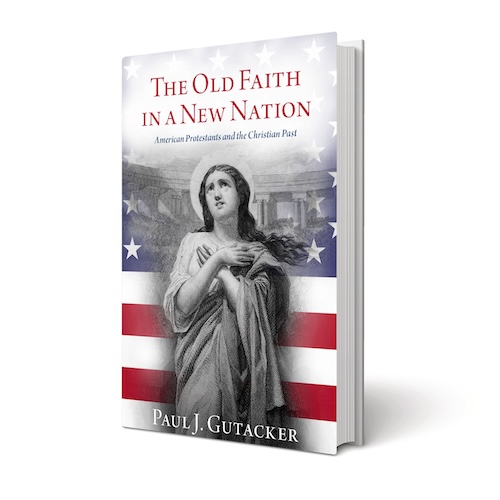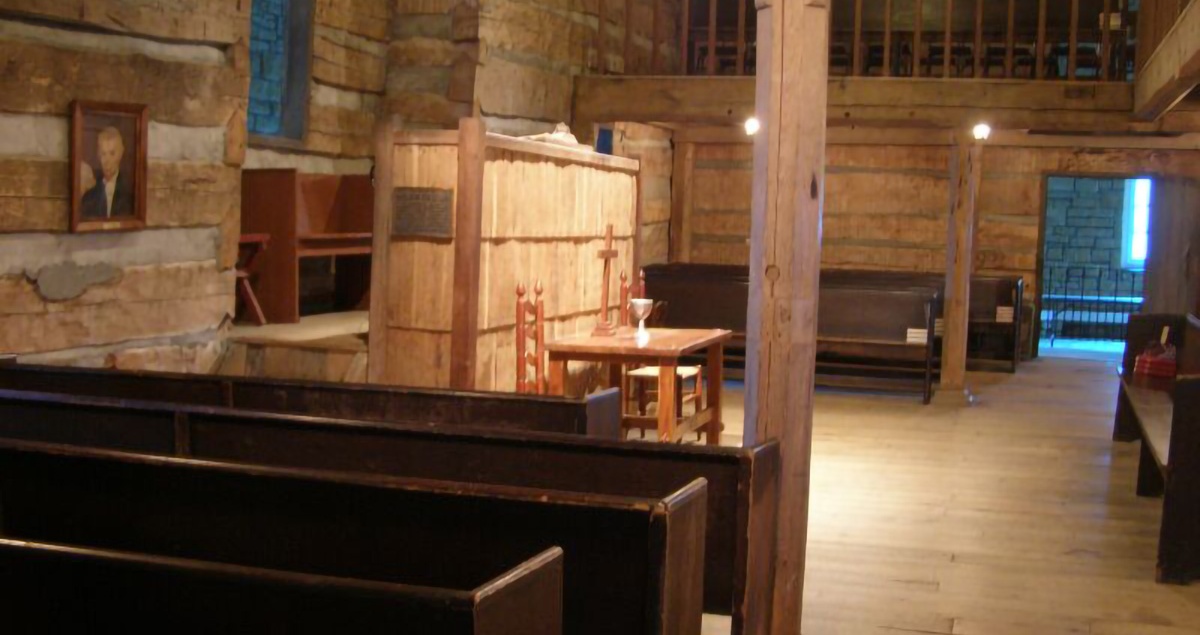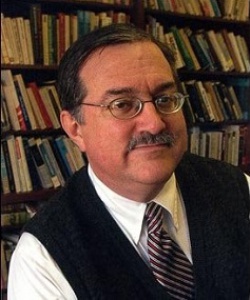It has long been virtually an article of faith among the most respected students of American Protestantism—not to mention those who are not students per se but who nevertheless feel comfortable generalizing about it—that American Protestantism (and evangelical Protestantism in particular) largely rejected the authority of tradition and the accumulated lessons of history in favor of a theology reliant upon the immediate authority of the Bible, which the common man exercising his common sense could encounter and interpret for himself. Such distinguished historians as Mark Noll, Nathan O. Hatch, and E. Brooks Holifield have been proponents of this view of American church history. Not that they have admired American Protestantism’s alleged rejection of the past; on the contrary: they have seen it as one of the chief weaknesses in that history. Noll in particular has suggested that the Church’s inability to deploy its moral authority to solve the sectional crisis over slavery was due to precisely this inability to move beyond “the plain meaning of Scripture” and incorporate Scripture into a larger understanding of the entire sweep of the Church’s moral teaching over two millennia.
Protestants, especially those of the low-church variety, are often viewed as dismissive of church history and tradition, preferring a “Bible-only” approach to theology and ecclesiology. But is it true?

By Paul J. Gutacker
(Oxford University Press, 2023)
But now along comes a rising young scholar, Paul J. Gutacker, to say that it ain’t necessarily so. The fact that his book comes with an unqualified endorsement on its cover from Mark Noll himself speaks volumes not only about the generous character of Mark Noll the scholar and man but also the persuasiveness of the arguments Gutacker has mounted in this fascinating and mind-opening study. His work, remarks Noll, “has demonstrated what other historians (including myself) have ignored or misconstrued: ‘religious memory’ in fact meant a very great deal to antebellum American Protestants.”
Before looking at Gutacker’s arguments, though, permit me the indulgence of an anecdote to support my sense of his book’s importance. Reading The Old Faith in a New Nation caused me to cast my mind back a number of years to a promising graduate student I worked with when I was on the history faculty of Tulane University. He was an evangelical, a member of the Churches of Christ, whose historical origins trace back to the Stone-Campbell movement of the 19th century. In fact, he was a product of one of the Church of Christ colleges, Lipscomb in Nashville, where he had received an excellent, old-fashioned liberal arts education. Fresh out of a Navy enlistment, this bright and delightful young man came to me with a thesis topic I found irresistible.
The topic took the form of a question, or a series of them. Why did the Churches of Christ have colleges in the first place, not to mention build the third-largest religious-college network in the country, behind the Roman Catholics and Lutherans? Was that not a logical fallacy, since the Restorationist theology of the Stone-Campbell movement was founded on the belief (reinforced by their use of the Scottish commonsense philosophers and the work of Francis Bacon) that the Bible should be understood as a scientific text full of unproblematic statements of truth that are accessible to all? The Churches of Christ in which this young man had grown up did not see the need of a learned clergy to interpret the Scriptures, since the meaning of those texts was presumed to be plain to every honest inquirer, so long as no obfuscation by learned men was allowed to muddy the waters. Nor did they admit the need to consult the historical record or the path of tradition, especially not during the first millennium of the Church’s existence. The voice of Scripture speaking in clear and unmediated tones overrode anything that tradition might have to offer.
So, asked my student, why do the Churches of Christ have colleges? Or, more pointedly, should they have them? How is it not a violation of their most fundamental avowed principles for them to have such institutions? What need was there for institutions of higher learning at all in a religious culture whose biblicism was so intense and comprehensive?
Such good questions, and yet so emotionally fraught for this splendid young man. He cherished the loving community of his denomination but did not find a logical intellectual connection between the ideas upon which it grounded its theological distinctiveness and the actual facts of its existence and practices. It was an impossible conundrum he had wandered into, a circle that could not be squared, and so it was not a surprise to me that he drifted away from Tulane and never completed his thesis. Too bad. Because I believe that if he’d had Paul Gutacker’s book in hand, he might have found a better way to formulate his questions.
Gutacker insists that 19th-century evangelicals did not eschew history and tradition nearly as much as we think they did.
Gutacker makes his case by relying, not on the academic study of church history or of scholarly innovations in biblical criticism, but on more widespread notions of the historical past, of memory as a collective activity, and of the past “as it is remembered,” the past as it became shaped and fostered in the imaginations of “ordinary educated Protestants.” Note the word “educated”; he is not talking about a bottom-up history of memory here but history that has been applied by many people to the task of living in the world. It turns out to be fairly undeniable that American evangelicals were deeply interested in the past and tradition and driven to seek guidance from them both.
That is not to say, of course, that the understandings of the past that motivated them would invariably pass muster with students of history today. Few popular understandings of history, past or present, ever clear that bar. But then again, few scholarly understandings of history speak directly to the felt needs of the larger populace. And in talking about memory, we are talking about the ways in which the past becomes appropriated into the consciousness of large numbers of individuals and groups—not the theologians but the men and women in the pews and the larger currents of society.
Gutacker marks out a surprisingly clear path toward historical consciousness, originating with certain 18th-century historians such as the Lutheran Johann von Mosheim and the Anglican Joseph Milner, whose multivolume works became widely read and influential for their emphasis on the lives and thought of “authentic” Christians, as well as for their disdain for sectarian theological or doctrinal interpretations imposed upon the past. It was “largely” from the resources of these writers that “literate Americans derived their understanding of the Christian past.” These early writers laid down a template for the creation of popular memory.

What were some of the chief features of that template? First of all, they captured a sweeping meta-history of decline and renewal. The Christian past was understood as a fall from the purity and simplicity of the apostolic era into the establishmentarian errors of the post-Constantinian Church, the thickening corruption of the medieval years, and then the ongoing effort at apostolic recovery that was at the heart of the Reformation. The American emphasis on disestablishment was one such effort to counter that colossal error, with a view toward the possible eventual return of apostolic purity. Immigrant Joseph Priestley’s General History of the Christian Church (1802), which he dedicated to then-President Thomas Jefferson, contrasted American liberty with the “violent persecutions” that were a common feature of the intolerant Catholic past. When Congressman William Findley argued against state establishment of religion in 1811, he invoked not theology or political history but the history of Christianity, pointing to “the corruption and tyranny of councils and emperors.”
Even issues like infant baptism were discussed in terms of church history. When the Congregationalist minister Daniel Merrill decided to cast his lot with the Baptists on that issue, he declared that Baptists “have been the uninterrupted church of our Lord from the apostles’ day to our own.” In the name of justifying a present-day disruption, Merrill found and preached continuity between his actions and the longer, deeper history of the Church in its entirety.
In this connection, Gutacker takes gentle issue with historian Nathan O. Hatch and his important book on the democratization of American Christianity. The growth of the Stone-Campbell movement, Hatch had written, was evidence of “the confidence that one could break the firm grip of custom and precedent,” and Methodists and Baptists flourished because “they embraced the American disregard for received authority.” And yet, as Gutacker argues, these changes did not make Christians less aware of the past. On the contrary, it made them more likely to couch their arguments in reference to developments in the history of the Church and not in Scripture alone. In Merrill’s case, among others, dissent from majority practice was presented in terms of obedience to the longer past, as they understood it.
These examples barely begin to convey the range and variety of examples that are provided in The Old Faith in a New Nation, many of them revolving around education, especially the education of ministers. I believe that my erstwhile graduate student would have found in them the beginnings of a persuasive account of how his denomination used history, even when it was not entirely conscious of doing so, to give an accounting of its “biblical” distinctives, and how the need to educate the laity about the raison d’etre of the denomination’s distinctive stances, if only in order to preserve those distinctives, might require the creation of institutions of higher education.
Gutacker is also candid about the inadequacies of the historical perspectives that were so often employed in the past. To say that Protestants were more history-minded than we previously had thought is not the same thing as saying that their historical understanding was always praiseworthy in its effects. The author finds the tropes of anti-Catholicism to be thick on the ground everywhere in 19th-century America, which will be news to no one; but it is quite another thing to argue that such perspectives were lacking in a historical dimension. Bad history is still history.
Even issues like infant baptism were discussed in terms of church history.
Gutacker is especially wary of efforts to work past disagreements in the Church by employing a magisterial and ahistorical “biblicism.” In his conclusion, he makes that aversion clear and explicit. Perhaps every major debate roiling the Protestant world begins with a reference to the Bible but quickly turns to a search for corroboration or refutation through the passages of history: the study of interpretations and practices of Christians who have come before us. How else are we to arrive at conclusions that are well grounded if they decline to incorporate the counsel of the theologies, saints, councils, scholars, and other testimonies of the past?
And yet Gutacker concludes by sagely remarking that history alone will not save us, since it can be so easily misused, and needs a countervailing force to keep it honest. His work reminds one of Herbert Butterfield’s remarks near the end of Christianity and History:
So the purpose of life is not in the far future, nor, as we so often imagine, around the next corner, but the whole of it is here and now, as fully as ever it will be on this planet. It is always a “Now” that is in direct relation to eternity—not a far future; always immediate experience of life that matters in the last resort—not historical constructions based on abridged text-books or imagined visions of some posterity that is going to be the heir of all the ages. … If there is a meaning in history, therefore, it lies not in the systems and organizations that are built over long periods, but in something more essentially human, something in each personality considered for mundane purposes as an end in himself.
Even more powerful, but also perhaps more unsettling, are Butterfield’s concluding words:
I have nothing to say at the finish except that if one wants a permanent rock in life and goes deep enough for it, it is difficult for historical events to shake it. There are times when we can never meet the future with sufficient elasticity of mind, especially if we are locked in the contemporary systems of thought. We can do worse than remember a principle which both gives us a firm Rock and leaves us the maximum elasticity for our minds: the principle: Hold to Christ, and for the rest be totally uncommitted.
In other words, in place of Progress with a capital P one should instead embrace the Rock with a capital R—Christ alone, and alone with Christ. Which is perhaps another way of saying that ultimate truth is, finally, outside the reach of historical inquiry.
Perhaps so. But it is unrealistic to believe that we, as historical creatures, can abstract ourselves entirely from history, even bad history, much as we might wish we could. The great virtue of Gutacker’s book is its effectiveness in underscoring that very point.




